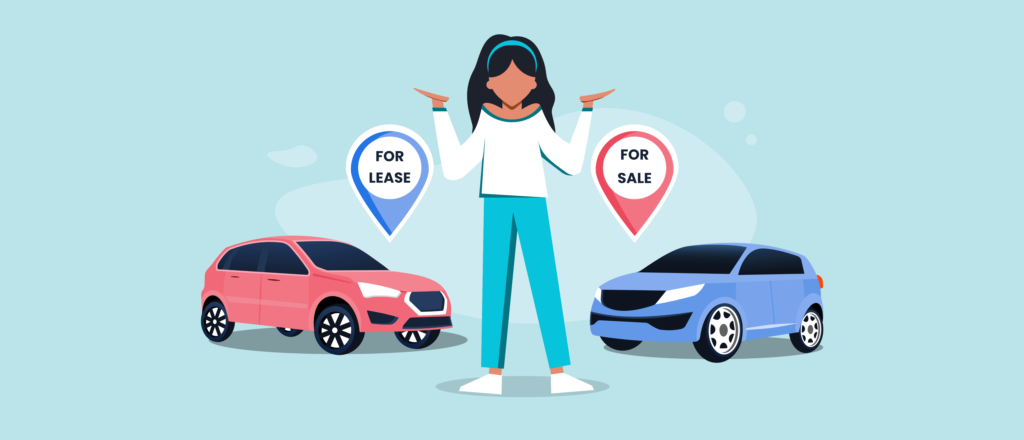Pros and Cons of Car Leasing vs. Financing: A Comprehensive Comparison
Car Lease VS Finance
When it comes to acquiring a new car, there are two main options to consider: leasing or financing. Both options have their own set of advantages and disadvantages, and it’s important to weigh them carefully before making a decision. In this article, we will provide a comprehensive comparison of the pros and cons of car leasing versus financing, helping you make an informed choice.
Let’s start with car leasing. One of the biggest advantages of leasing is the lower monthly payments compared to financing. Since you are essentially renting the car for a fixed period of time, you only pay for the depreciation of the vehicle during that time. This can be particularly appealing if you’re on a tight budget or prefer to have more disposable income each month.
Another advantage of leasing is the ability to drive a new car every few years. Leases typically last for two to three years, after which you can return the car and lease a brand new one. This allows you to enjoy the latest features and technology without the hassle of selling or trading in your vehicle. Additionally, since leased cars are usually under warranty, you don’t have to worry about expensive repairs.
However, there are also some downsides to leasing. One major drawback is the mileage restrictions imposed by leasing companies. Most leases come with an annual mileage limit, and exceeding this limit can result in hefty fees. If you have a long commute or frequently take road trips, leasing may not be the best option for you.
Furthermore, when you lease a car, you don’t build any equity. Unlike financing, where each payment contributes to the ownership of the vehicle, leasing is essentially a long-term rental. This means that at the end of the lease term, you have nothing to show for the money you’ve spent.
Now let’s turn our attention to financing. One of the biggest advantages of financing is that you eventually own the car. Each monthly payment goes towards the principal amount, allowing you to build equity over time. Once the loan is paid off, the car is yours to keep or sell as you please.
Financing also offers more flexibility in terms of mileage. Since you own the car, there are no mileage restrictions to worry about. You can drive as much as you want without incurring any additional fees.
However, financing does come with higher monthly payments compared to leasing. This is because you are paying for the full purchase price of the vehicle, rather than just the depreciation. Additionally, financing often requires a down payment, which can be a significant upfront cost.
Another disadvantage of financing is that you are responsible for maintenance and repairs once the warranty expires. This can be costly, especially if you encounter any major issues with the vehicle.
In conclusion, both car leasing and financing have their own set of pros and cons. Leasing offers lower monthly payments and the ability to drive a new car every few years, but comes with mileage restrictions and no equity. Financing, on the other hand, allows you to build equity and offers more flexibility in terms of mileage, but comes with higher monthly payments and the responsibility of maintenance and repairs. Ultimately, the choice between leasing and financing depends on your personal preferences, budget, and driving habits.
Understanding the Differences: Car Lease vs. Car Loan

Are you in the market for a new car? If so, you may be wondering whether it’s better to lease or finance your vehicle. Both options have their advantages and disadvantages, so it’s important to understand the differences before making a decision. In this article, we will explore the pros and cons of car leasing and car loans, helping you make an informed choice.
Let’s start by looking at car leasing. When you lease a car, you essentially rent it for a set period of time, typically two to four years. During this time, you make monthly payments to the leasing company, which cover the depreciation of the vehicle. At the end of the lease term, you return the car to the leasing company and have the option to lease a new one.
One of the main advantages of leasing a car is that your monthly payments are generally lower compared to financing. This is because you are only paying for the depreciation of the vehicle, rather than the full purchase price. Leasing also allows you to drive a new car every few years, which can be appealing if you enjoy having the latest technology and features.
However, there are some downsides to leasing as well. For one, you don’t own the car at the end of the lease term. This means that you have nothing to show for your monthly payments once the lease is up. Additionally, there are often mileage restrictions with leasing, and if you exceed these limits, you may have to pay additional fees. Finally, if you decide to end the lease early, you may face hefty penalties.
Now let’s turn our attention to car loans. When you finance a car, you take out a loan to purchase the vehicle. You then make monthly payments to the lender until the loan is paid off. Once the loan is fully repaid, you own the car outright.
One of the biggest advantages of financing a car is that you eventually own it. This means that you can keep the car for as long as you like, without having to worry about returning it to a leasing company. Financing also allows you to build equity in the vehicle, which can be beneficial if you plan on selling it in the future.
However, there are some drawbacks to financing as well. First and foremost, your monthly payments are typically higher compared to leasing. This is because you are paying for the full purchase price of the vehicle, rather than just the depreciation. Financing also means that you are responsible for any maintenance and repairs, whereas with leasing, these costs are often covered under warranty.
In conclusion, both car leasing and car loans have their pros and cons. Leasing offers lower monthly payments and the ability to drive a new car every few years, but you don’t own the vehicle at the end of the lease term. Financing, on the other hand, allows you to eventually own the car and build equity, but your monthly payments are higher. Ultimately, the choice between leasing and financing depends on your personal preferences and financial situation.
Making the Right Choice: Factors to Consider When Deciding Between Car Lease and Finance
When it comes to getting a new car, there are several options available to you. Two of the most popular choices are leasing and financing. Both options have their own advantages and disadvantages, so it’s important to carefully consider your needs and preferences before making a decision.
One of the main factors to consider when deciding between leasing and financing is your budget. Leasing a car typically requires lower monthly payments compared to financing. This is because you are essentially renting the car for a set period of time, usually two to three years. On the other hand, financing a car involves taking out a loan to purchase the vehicle, which means you will have higher monthly payments. If you have a tight budget and want to keep your monthly expenses low, leasing may be the better option for you.
Another factor to consider is your driving habits. Leasing a car comes with mileage restrictions, typically around 10,000 to 15,000 miles per year. If you exceed these limits, you may have to pay additional fees. If you have a long commute or frequently take road trips, financing may be a better choice for you, as there are no mileage restrictions. You can drive as much as you want without worrying about extra charges.
One advantage of leasing is that you can drive a new car every few years. This is great for those who like to have the latest technology and features in their vehicles. When your lease term is up, you simply return the car to the dealership and can choose to lease a new model. On the other hand, financing allows you to eventually own the car outright. This can be a great option if you plan on keeping the car for a long time and want to build equity.
Insurance costs are another factor to consider. When you lease a car, the dealership may require you to have higher insurance coverage, which can increase your monthly premiums. Financing a car, on the other hand, allows you to choose your own insurance coverage based on your needs and budget. It’s important to factor in these additional costs when making your decision.
One final factor to consider is the condition of the car at the end of the lease or finance term. When you lease a car, you are responsible for returning it in good condition, with normal wear and tear expected. If there are any damages beyond normal wear and tear, you may have to pay additional fees. When you finance a car, you have the freedom to modify and customize it as you please. However, keep in mind that any modifications may affect the resale value of the car.
In conclusion, there are several factors to consider when deciding between leasing and financing a car. Your budget, driving habits, desire for a new car every few years, insurance costs, and the condition of the car at the end of the term all play a role in making the right choice. It’s important to carefully weigh these factors and consider your own personal preferences before making a decision. Whether you choose to lease or finance, the most important thing is to find a car that fits your needs and brings you joy on the road.
Q&A
1. What is a car lease?
A car lease is a contractual agreement where a person pays a monthly fee to use a vehicle for a specified period, typically 2-4 years, without owning it.
2. What is car financing?
Car financing refers to obtaining a loan to purchase a vehicle. The borrower makes monthly payments, including interest, until the loan is fully repaid, and then becomes the owner of the car.
3. What are the main differences between car lease and car finance?
The main differences between car lease and car finance are ownership, monthly payments, and flexibility. With a lease, you don’t own the car and have to return it at the end of the lease term. Financing allows you to own the car once the loan is paid off. Lease payments are typically lower than finance payments, but you don’t build equity. Financing offers more flexibility in terms of customization and mileage, while leases often have mileage restrictions and penalties for excessive wear and tear.
Conclusion
In conclusion, the decision between car lease and finance depends on individual preferences and financial circumstances. Car leasing offers lower monthly payments and the ability to drive a new car every few years, but it comes with mileage restrictions and no ownership at the end of the lease term. On the other hand, car financing allows for eventual ownership and no mileage restrictions, but it typically involves higher monthly payments and longer-term commitments. It is important for individuals to carefully consider their budget, driving habits, and long-term goals before deciding between car lease and finance.




